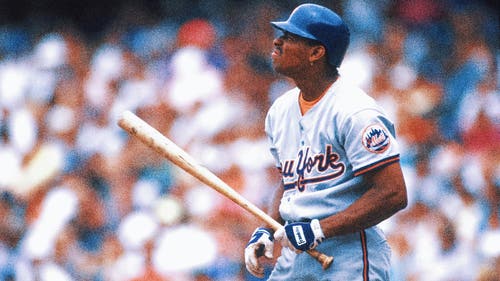
AL's for hitters, NL's for pitchers
We’re told that stereotyping is dangerous. I usually agree. But this offseason has been catnip for those who enjoy the occasional generalization.
Oh, come on. Don’t be bashful. Take out your broad brush and coat the major leagues with two-tone paint.
The American League is a hitter's haven.
The National League is a pitcher’s paradise.
There. I said it. If you disagree, then perhaps you stopped paying attention to baseball right after your fantasy football draft. Even then, what occurred during October is barely half the story.
The most noteworthy pitchers to change leagues this winter have been Cliff Lee, Zack Greinke and Shaun Marcum.
They went from the AL to NL.
The most noteworthy hitters to change leagues this winter have been Adrian Gonzalez, Adam Dunn and Josh Willingham.
They went from the NL to AL.
The trend extends to the bullpen. Several prominent free-agent relievers remained in the AL. A few more — Matt Guerrier, Kerry Wood and J.J. Putz — left the AL for the NL. But we haven’t seen NL pitchers moving the other way.
If you’re pitching in the NL, chances are good that you want to stay. Ask Jorge de la Rosa, Hiroki Kuroda, Ted Lilly and Jake Westbrook. The same goes for AL hitters, who see no reason to leave their hitter-friendly neighborhoods. See Carl Crawford, Victor Martinez, Derek Jeter, Paul Konerko, Magglio Ordoñez and (most likely) Adrian Beltre.
True, Jayson Werth stayed in the NL East. But his contract is the very definition of an outlier.
The AL’s reputation as the more offensive league is as old as the designated hitter. This year, the average AL team scored more than the average NL team: 4.45 runs per game, compared with 4.33. That is not a surprise.
But if star power counts as much as I think it does, then the leagues’ respective styles could diverge further in 2011.
Where did this phenomenon begin? Why, in the city where age-old institutions are routinely tweaked: San Francisco.
By now, shock has given way to perspective: The Giants are the reigning world champs because they possess a superb pitching staff. Tim Lincecum, Matt Cain and Madison Bumgarner went a combined 8-1 during the postseason. At 26, Lincecum is the oldest of that group.
Since baseball is something of a copycat sport — Moneyball, prospect infatuation, defensive metrics, etc. — NL executives figured it would be prudent to build teams capable of outpitching the Giants.
And whaddaya know: The Phillies signed Cliff Lee.
When viewed through that prism, Lee’s return to Philly goes from stunning to sensible. The Phillies simply were countering the strength of a chief competitor. They knew the Giants won the World Series despite a lineup that produced below the league average during the regular season.
Add Lee. Subtract Werth. Sounds about right.
Competitively speaking, the Brewers made the same choice. On the eve of the winter meetings, Milwaukee’s starting rotation included Yovani Gallardo, Randy Wolf, Chris Narveson … and … uh … maybe Wes Obermueller.
In such a state, they did not pose a threat to the Cincinnati Reds, the St. Louis Cardinals, or even the Chicago Cubs. That changed when they traded for Marcum. That really changed when they traded for Greinke.
“I don’t think as executives we say, ‘Let’s go and get an AL pitcher because the ERA differential (between the leagues) was .12,’” said Brewers general manager Doug Melvin, the man who acquired Marcum and Greinke. “Winning baseball has always been about pitching and defense.”
Melvin doesn’t view this offseason as an indication that rosters are being constructed differently between the leagues. But I keep coming back to this: Christmas is four days away, and not one AL contender has added someone whom I would consider to be an impact starting pitcher.
That could change, if Carl Pavano re-ups with Minnesota. But even the addition of Pavano would fall short of transforming a Twins rotation that lacks a true ace and includes two starters coming off elbow surgeries.
Other teams share the same plight. The Rangers lost Lee. The Yankees, as you might have heard, didn’t get Lee and are waiting on Andy Pettitte. The Red Sox are counting on three starters to bounce back. The Tigers are hoping on Phil Coke and Armando Galarraga. The White Sox don’t know when Jake Peavy will be healthy. The Angels apparently misplaced their checkbook.
At the moment, the Oakland A’s may have the best pitching staff in the AL.
Can the AL clubs improve between now and Opening Day? Of course. But keep this in mind: January is the month when teams look for veteran pitchers who can bounce back from health woes and/or underperformance. And what is the stock advice for the Brandon Webbs, Chris Youngs and Jeremy Bondermans? That’s right: Go to the NL, put up numbers, and get paid next year.
All of which leads me to two conclusions: 1) The AL will have serious pace-of-game issues this year; and 2) Don’t be surprised if the NL wins back-to-back World Series for the first time since 1982.
The Yankees, so often the trendsetters, are an apt flagship franchise for the 2011 American League: They have a slugging, entertaining lineup that will need to cover for a pitching staff of uncertain quality.
If the Yankees and their AL brethren don’t wish to be typecast, the suitable response would be to buy more pitching. But this is a lousy time of year to be stuck in line at the mall.










